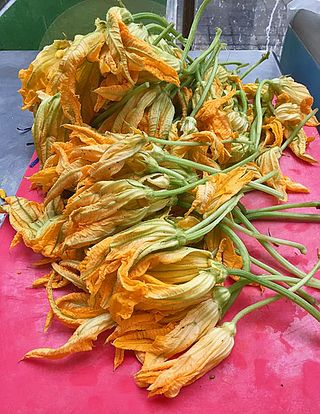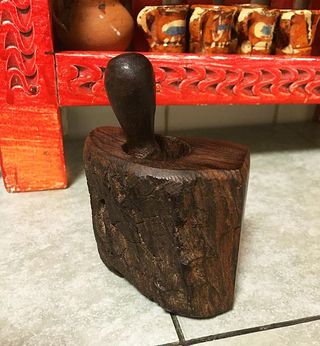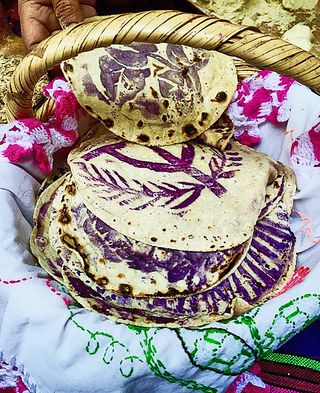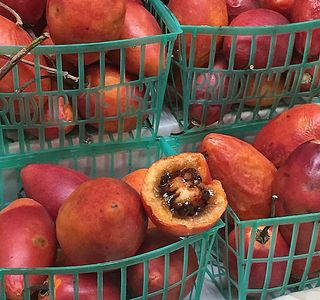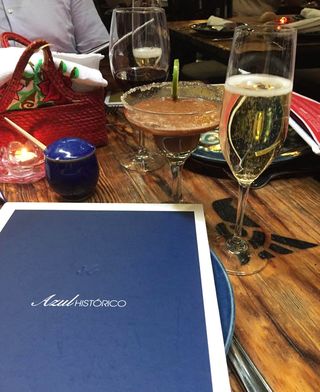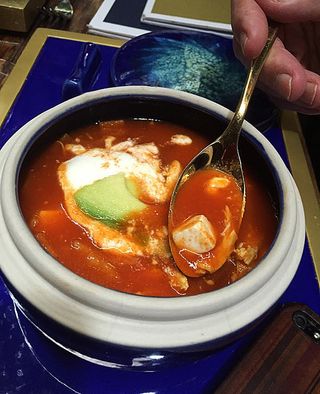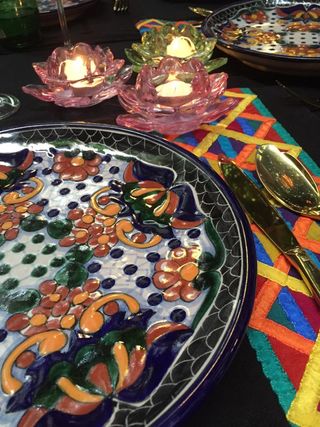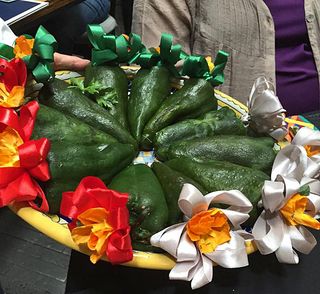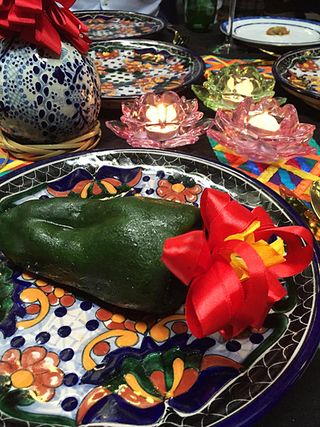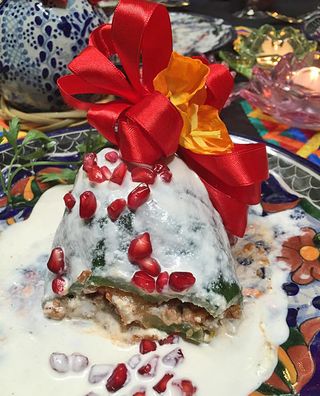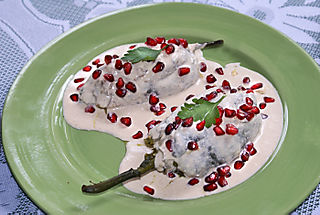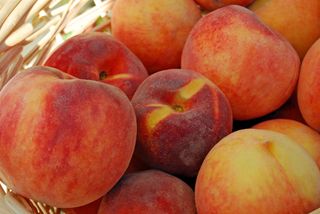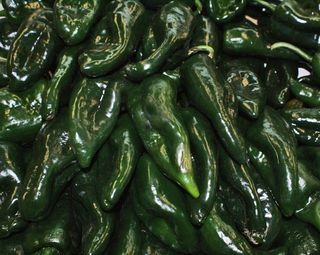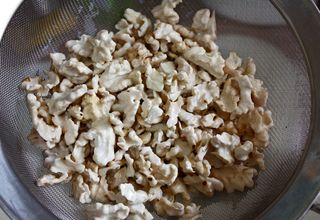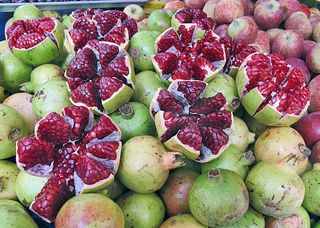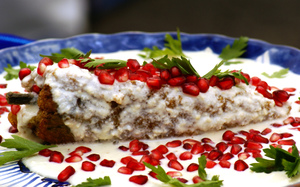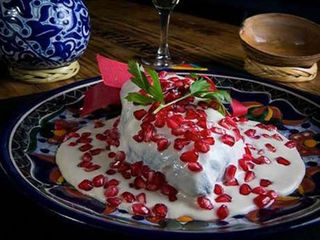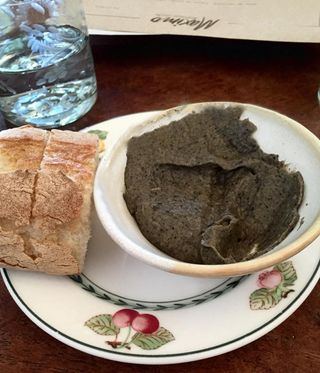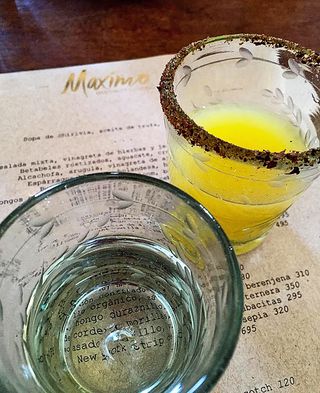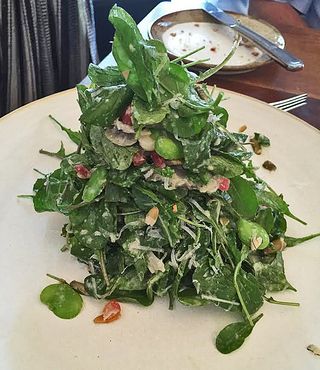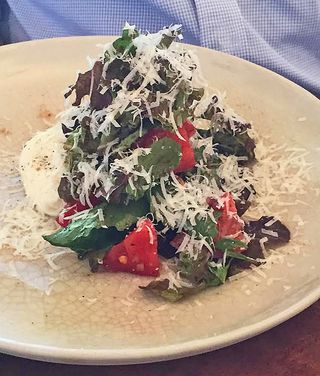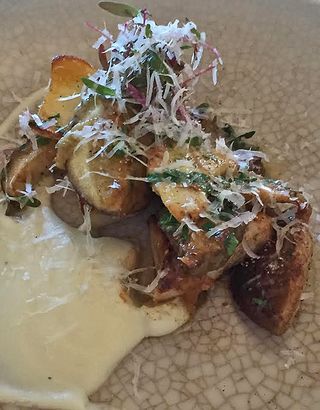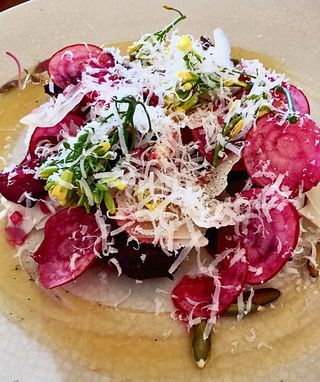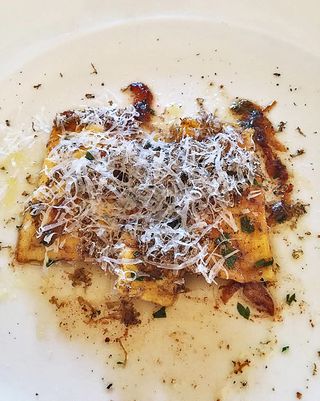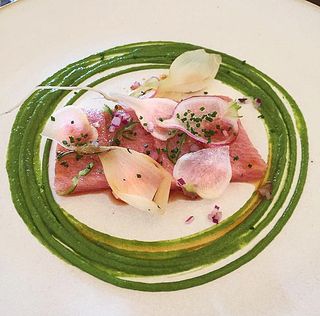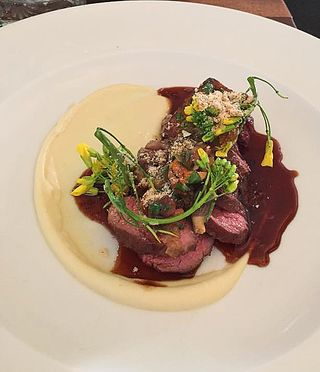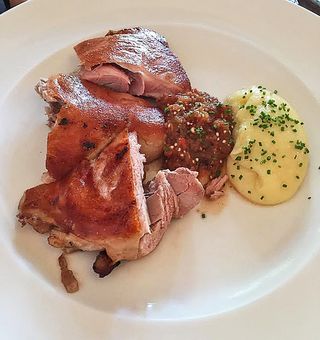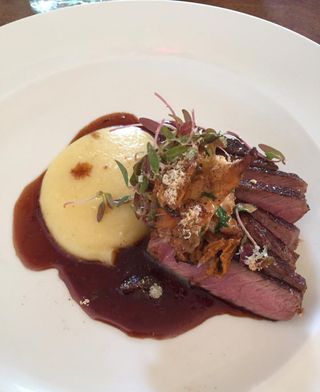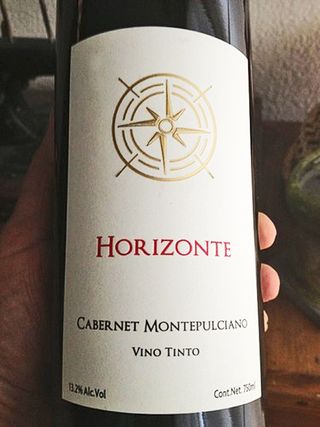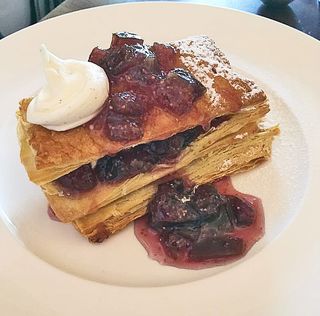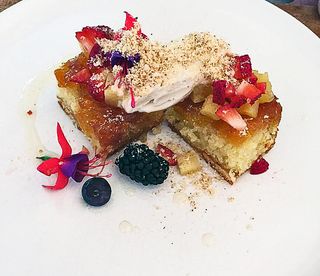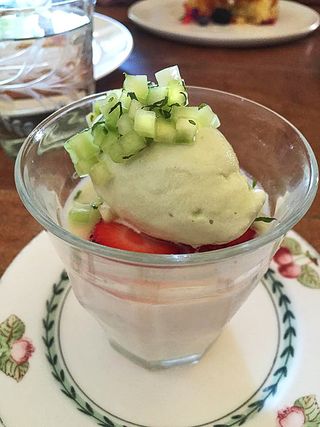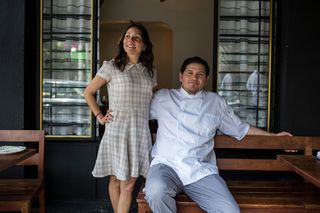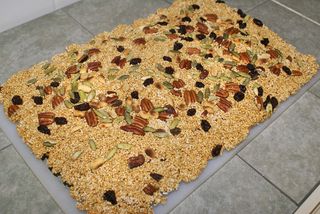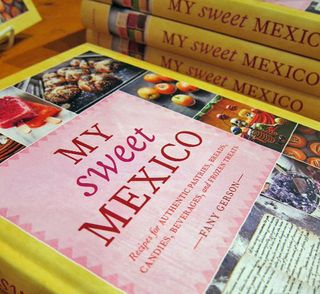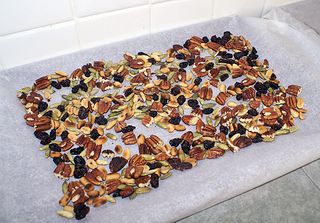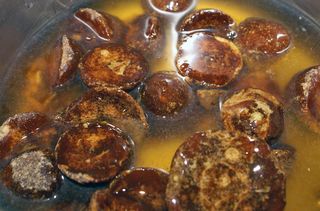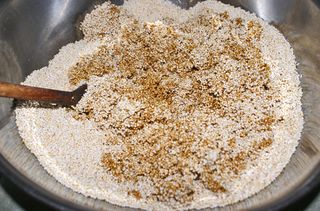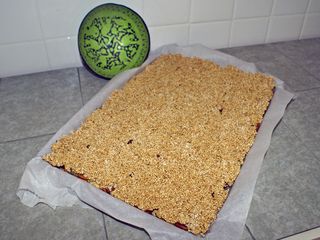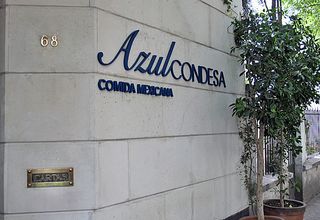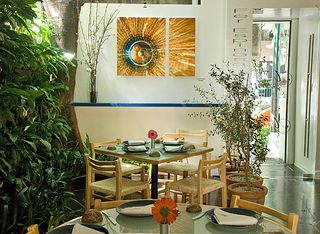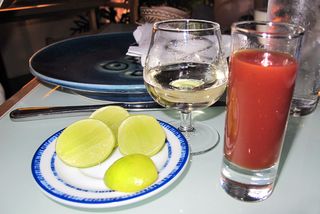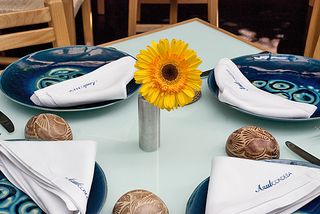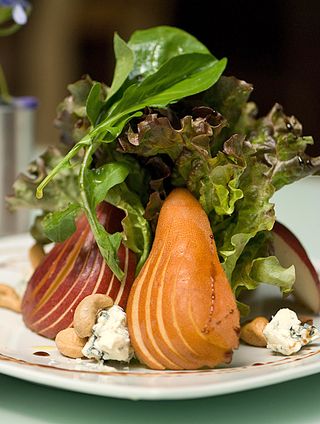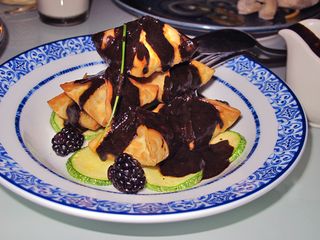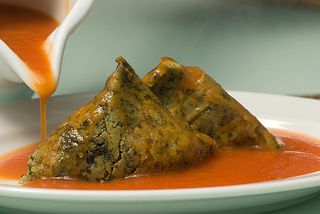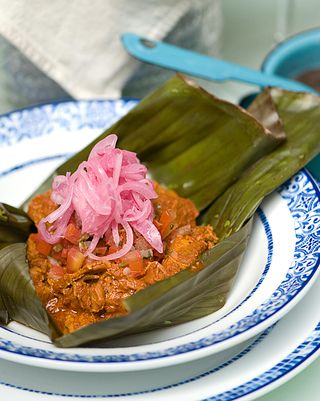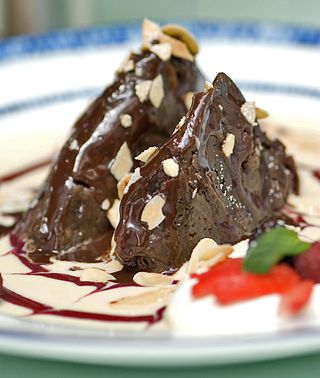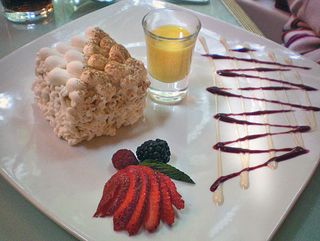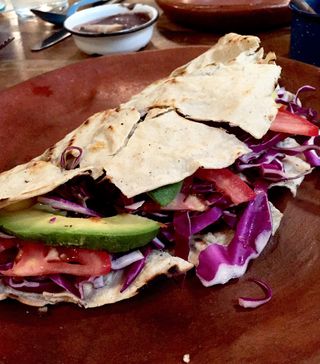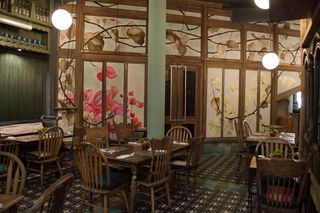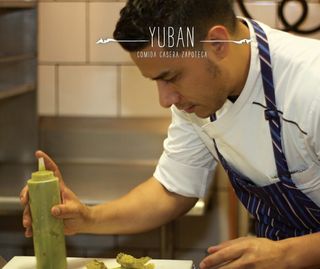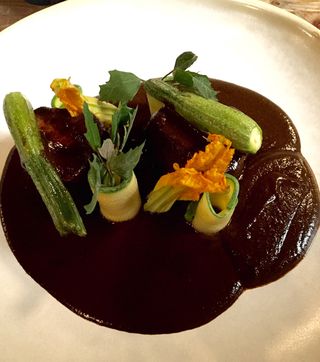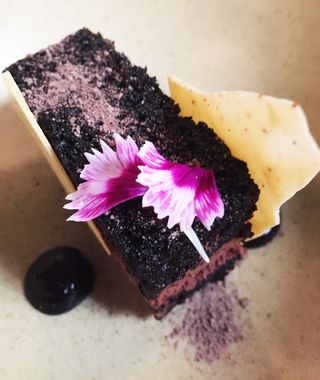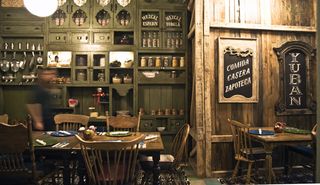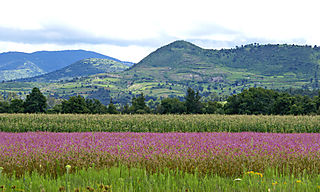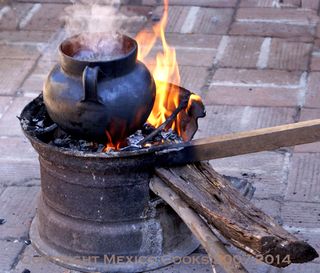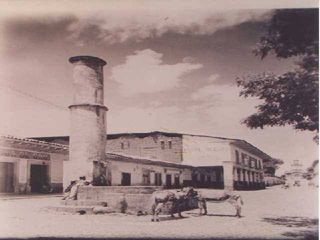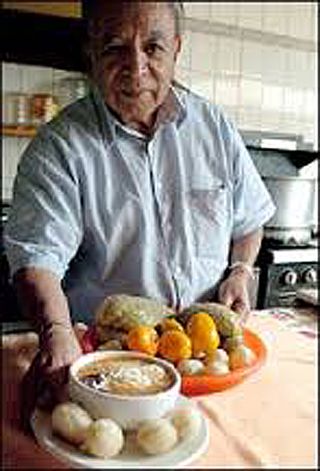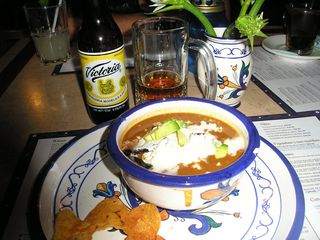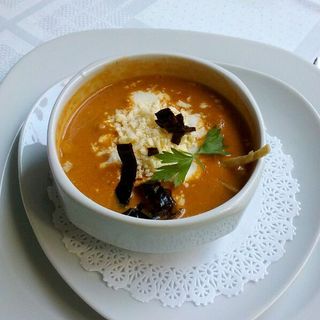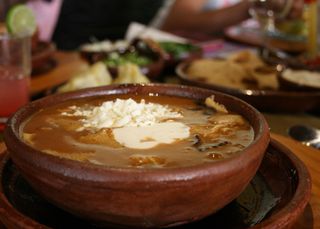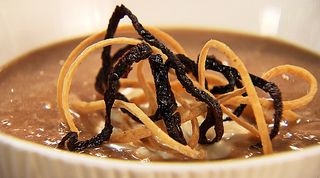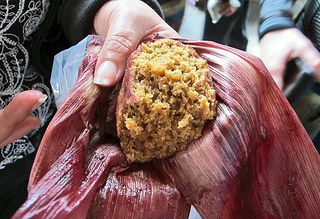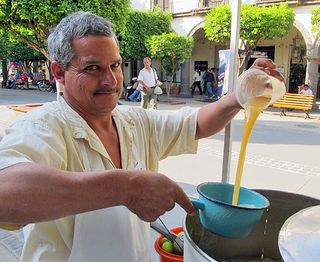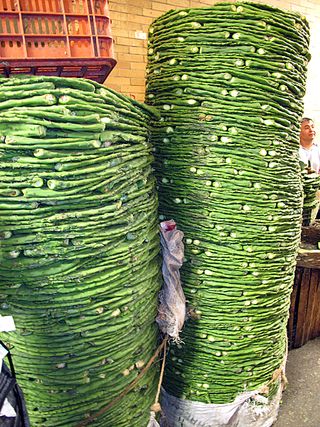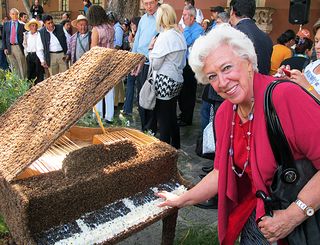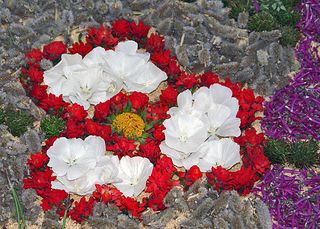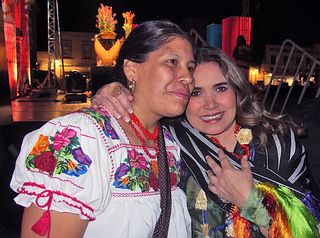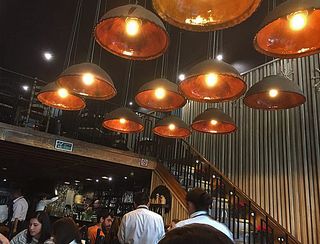
The main dining room at Fonda Fina is cozy in the best possible ways: it's warming to the spirit and feels just like the party you always wanted to attend. Not only that, it's filled with beautiful design. Case in point: those lampshades are enormous upside down cazuelas–Mexican clay cooking vessels–and illuminate the room with a joyous light.
In early December, one of the people I love best in Mexico City sent me a Whatsapp: "What are you doing tomorrow for comida? I want to take you to try a new place I found." Never one to say no to a dear friend or a new restaurant, I Whats'd her right back and said, "Vámonos!" (Let's go!) The next day, I met her at Fonda Fina in Mexico City's trendy Colonia Roma. At 2:30PM, the place was moderately busy. By three o'clock, it was packed. Just two and a half months post-opening, it was obvious from the happy hum in the room that something wonderful was happening.

Because my friend had arrived a few minutes before I did, a wee basket of tostaditas (little house-made tostadas) and two salsas in mini-molcajetes were already on the table. In addition, the restaurant has an old-fashioned practice that made me smile. Every day the chef prepares a lightly flavored water–one day with a touch of basil, another day a touch of jasmine, another day a delicious flavor that you can almost-but-not-quite place–that's offered as a reminder that you're visiting someone and that, as a visitor, you're important.

In Mexico, the very best mannered people (think your maiden great-aunt) insist that when a guest arrives, a glass of water is almost instantly forthcoming. It's always served in a glass placed on a small plate with a napkin, in case the water spills over or in case you dribble, and it welcomes you whether you have traveled days from a far-distant place or have merely come from the next floor down in your apartment building. Photo from the Mexico Cooks! kitchen.
Old-fashioned niceties, old-fashioned food (some with a modern twist), and old-fashioned service are the hallmarks of this charming restaurant. Fonda Fina, backed by chef Jorge Vallejo of the acclaimed Restaurante Quintonil, by the actor Luis Gerardo Méndez, and by the restauranteur Ramón Orraca, combines the talents of each man to bring a fresh, new aspect and ambiance to Colonia Roma. Fonda Fina's executive chef, Juan Cabrera Barron, has earned his stripes in a variety of kitchens in many parts of Mexico. During recent years, chef Cabrera has been an important part of the Hotel Camino Real restaurant staff in several cities including Guadalajara and Mexico City. Now he's all ours!
But enough preamble: let's eat!
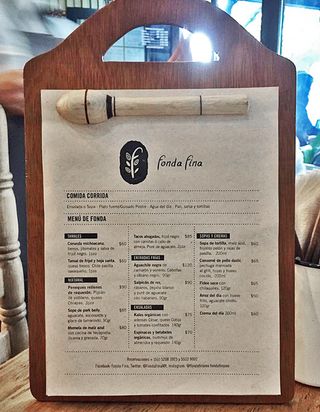
The first two pages of the Fonda Fina menu explain how this restaurant serves your meal. Order a la carte items from the first page and order a meal similar to a comida corrida (complete main meal) from the second page. Click on any photo to enlarge the image for better viewing. Because chef Cabrera is a friend of the friend who invited me, and because she and I both wanted to try as many dishes as possible, we didn't place an order: chef Cabrera simply started sending dishes to our table.
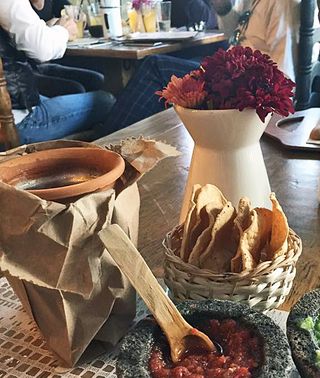
Please notice, at the left of the photo, the paper bag holding the clay container. This was our pre-meal drink: it's called, at least at Fonda Fina, teporocho. Teporocho is a down-and-dirty Mexican slang word for the drunk who can't pick himself up off the sidewalk, the guy who's drinking from his pint bottle concealed in (you guessed it) a paper bag; the word has a long and inglorious history in Mexican popular culture. To find teporocho served in a high-class restaurant is a bit of a shock, a trip into the seamier side of life, and a really terrific start to a meal. I had two, and the taste and effect are a little like Long Island Iced Tea. If you don't see it on the menu, ask for it. And take it slow.

Our first treat was the taco placero (plaza-style taco). The soft, warm tortilla was smeared with asiento (the dark, thick lard left in the bottom of the rendering pot) and then smeared again with refried beans. Folded in half, it was then garnished with avocado, chicharrón (crisply fried pork skin), fresh crumbled cheese, a spicy salsa cruda (raw sauce), and cilantro sprouts. The small taco did what it was meant to do: it left us wanting more.
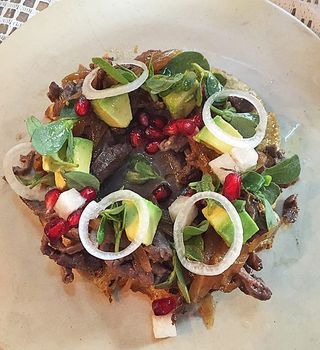
Chef Cabrera then sent out memelas de cecina (a Oaxaca corn-based delicacy). The toppings for the memelas were avocado, jícama, caramelized onions, pomegranate seeds, raw onions, and sprouts of acidy verdolagas (purslane). The combination of flavors was mouth-watering.
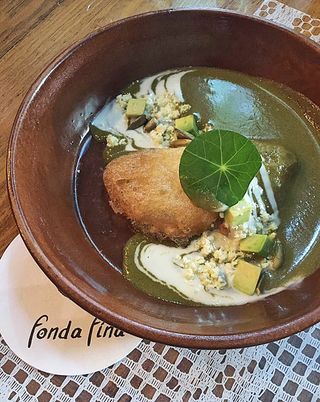
I could have eaten two of these incredibly delicious antojitos (literally, little whims) from Puebla: peneques rellenos de requesón. Fill a soft, uncooked tortilla with requesón (similar to ricotta cheese), fry it till it's crisp, then let it sit in a warm bath of green pipián from Puebla, and garnish it with Chiapas cheese, little cubes of avocado, and pumpkin seeds, add a swirl of Mexican table cream, and decorate the dish with an edible, peppery nasturtium leaf. I stopped at one, but…this was simply marvelous.
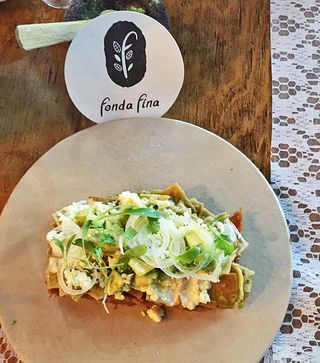
Fideo seco con chilaquiles (dry-cooked angel hair pasta with chilaquiles). Chef Cabrera's signature dish, topped with requesón and crema (cheese similar to ricotta accompanied by Mexican table cream), this is another do-not-miss from the a la carte menu.

Crema Conde, a classic Mexican cream soup, is made of puréed black beans, smooth as silk, and in this case poured over crumbled fresh cheese and a sprig of sprouts. Thick and rich, it made us aware that we hadn't quite arrived at the main course yet and we needed to slow the pace. Stop now? Never! Slow down a little, that's all.

Crema poblana, made from roasted, slightly spicy chile poblano and poured over tender corn kernels and fresh cheese. I am hard pressed to choose a favorite between the crema conde and the crema poblano. Fortunately Fonda Fina serves just one of them as the crema del día (cream soup of the day).

Main course: costillas de res (beef short ribs), oven-braised for 12 hours and served with tender baby asparagus, quelites de cenizo (field-grown greens), rings of raw onion, and diced avocado. Fork tender and complexly flavored, this offering from chef Cabrera was perfect.
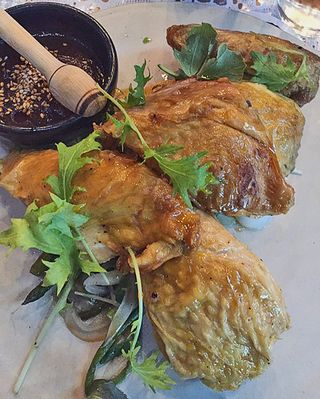
The Fonda Fina kitchen offers simple and delicious roast chicken, either a half or the whole bird. On a second occasion at the restaurant, another friend and I ordered the whole chicken to share. The skin was crisp and golden, the chicken was juicy and tender, and we were both more than pleased to share it.
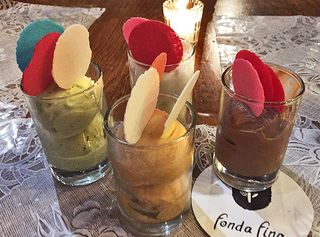
Dessert: a selection of unusual and delicious ice creams, all house-made. Clockwise from the left: avocado, hoja santa, chocolate, and chicozapote. The rich, deep, creamy chocolate and the hoja santa, with its marvelous anise flavor, were my favorites.
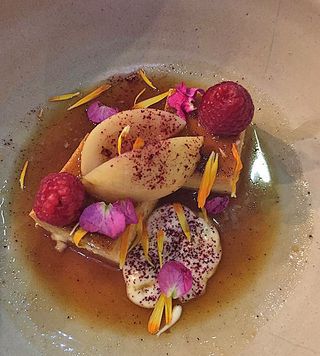
One of the latecomers ordered Chiapas-style cheese flan, garnished with guava, raspberries, edible flowers, and maguey cactus honey.
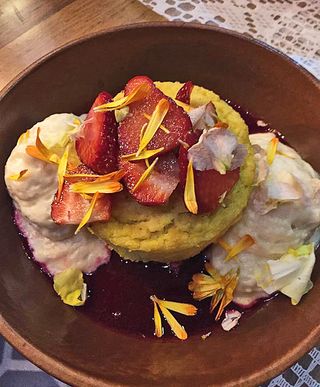
For our last dessert–and you thought we'd never stop eating!–the second late arrival asked for pan de elote tierno (sweet corn cake) with strawberries flamed with mezcal and a foam created from Michoacán's famous chongos zamoranos (a milk-based treat).
Mexico Cooks! has eaten at Fonda Fina several times since early December and has never been disappointed. If you're visiting Mexico City or if you live here and are looking for a delightul experience, do go for a meal. It's a wonderful thing to be able to recommend a new restaurant on all levels: ambiance, service, and excellent food. Let me know how you like it!
Looking for a tailored-to-your-interests specialized tour in Mexico? Click here: Tours.
